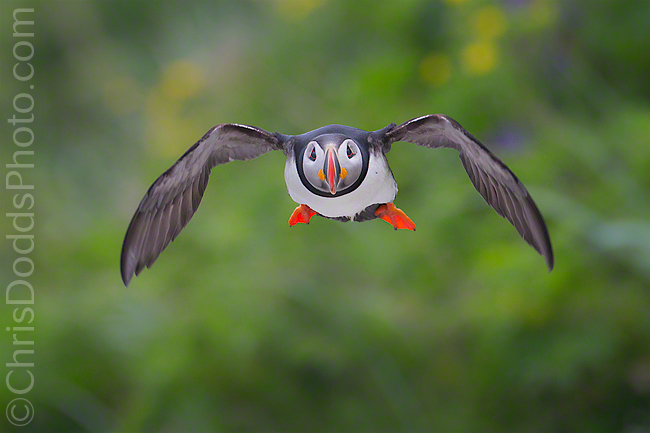
Canon EOS 1DX First Impressions
As I mentioned in my last post, Canon Canada Loaned me one of the very first production models of their new flagship camera that they received; the Canon EOS 1DX. What a camera! In the hand, the camera is slightly heavier than previous 1D camera bodies, but the fit and feel is great. I took the camera to my Puffins Galore photo safari to L'Île aux Perroquets in the Mingan Archipelago National Park Reserve of Canada. The great sunlight we had during our first morning gave way to foggy and heavy overcast skies; the kind of light that is very flat with low contrast for the remaining two and a half days. It was the kind of light that wreaks havoc with a camera's ability to auto-focus.
There are, and will be, a ton of well written and lengthy reviews of the camera out there; some will be written by folks who may have never touched the camera, others by people who may have popped-off just a couple of frames in the studio. There is a growing number of camera enthusiasts writing reviews based on hearsay and technical bulletins - I find them best avoided and instead like to put the cameras through their paces in the field in difficult conditions. This is just meant to be this man's take after using the camera for three days; in somewhat foggy and dark conditions while photographing very difficult, fast and very small birds.

Observations
There are some new goodies tucked into the camera's Auto-focus menu; I spent a lot of time trying the new scenarios, and loved the ability to tweak minute details within them. I found myself using Scenario 5 most when birds were flying towards me and scenario 1 for most other birds in flight - I did adjust the parameters for both almost constantly; the distraction sometimes causing me to miss a shot, or two, early on.
I made images from ISO 400 throughout 6,400 and found virtually no noise up to ISO 1,600. Images made using ISO 1,600 to 6,400 are surprisingly good and require only a little effort if properly exposed. I used Adobe Camera Raw algorithms to remove any noise and am quite pleased with the high ISO results. I would expect the Canon software to do an even better job this early, and will keep you posted in future posts.
I have been using my Canon 1D Mark IV for most nature photography and my Canon 1Ds Mark III for landscapes, head shots and slow moving subject. This has the potential to replace both cameras, but the deal breaker is no autofocus with lenses or lens and extender combinations with a maximum aperture of f/8 or smaller. I had heard rumours that Canon may release a firmware update that would allow this, but it seems to be just a rumour at the moment; I'll let you know if I hear of a work around.

Conclusion
In conclusion, I did love the narrow depth-of-field from the full frame sensor; it's awesome to obliterate close and distracting backgrounds. 12fps while shooting in RAW format is ridiculously awesome for action photography. Files from the 18MP sensor are rich and full of details. The auto-focus system proved to be totally amazing when trying, so deperatly, to place my moving subjects against anything other than the bright white sky as the background; something that other auto-focus systems had much difficulty with before the 1DX.
Will it replace my 1D Mark IV? No, not unless Canon releases a firmware version that allows autofocus at f/8 so I can continue to shoot birds in flight with my 500 f/4 and 2X extender. This camera will, however, replace my Canon 1Ds Mark III
Expect more about the 1Dx in future posts.

